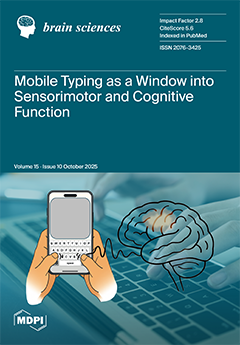Background: Parkinson’s disease (PD) is a neurodegenerative condition that affects quality of life due to motor (gait, balance) and cognitive alterations, raising the risk of falling. Virtual reality (RV) and dancing have shown benefits for speed of walking, balance, and postural stability, as
[...] Read more.
Background: Parkinson’s disease (PD) is a neurodegenerative condition that affects quality of life due to motor (gait, balance) and cognitive alterations, raising the risk of falling. Virtual reality (RV) and dancing have shown benefits for speed of walking, balance, and postural stability, as well as decreased risk of falls.
Objective: The goal of this study was to analyze the effectiveness of RV and dancing using a Kinect Xbox 360 video game to improve walking speed and motor performance and reduce the risk of falls in patients with PD.
Method: This is a pre-experimental study with a simple pre-post design, involving a single group of 14 patients diagnosed with PD in stages 1 to 4 of the Hoehn and Yahr (H and Y) scale, from the National Institute of Neurology (INNN). Before and after the intervention, motor tests, the Unified Parkinson’s Disease Rating Scale (UPDRS-III), the Timed Up and Go (TUG) test, and the Tinetti were applied. The intervention consisted of 16 bi-weekly sessions, which included warm-up, coordination exercises, 10 songs, and cool-down.
Results: Effects of the RV intervention were observed on improvements in motor tests (z = −2.640,
p = 0.008), gait (z = −3.316,
p = 0.001), balance (TUG) (z = −2.966,
p = 0.001), and on the UPDRS-III scale (total index) (z = −3.048,
p = 0.002). An increase in the difficulty level of dancing was also observed (X
2 = 144.13,
p < 0.01).
Conclusions: The virtual reality intervention with dancing improved motor performance, including increased walking speed, enhanced postural stability, reduced stiffness and bradykinesia, and a decreased risk of falls
Full article






